Corona might have left us behind, but the habit of citizens to enjoy food from the comfort of their place seems to have been entrenched as a comfort of ease. This can be seen from the quarterly results of Zomato, which reported a second consecutive quarter of profit. The food aggregator reported a net profit of Rs. 36 crore for the recent quarter, up from a loss of Rs. 251 crore in the year-ago period. Revenue from operations grew 71% to touch Rs. 2,848 crore, driven by an order volume surge across its food ordering and quick commerce businesses. The company posted adjusted EBITDA of INR 41 crore as compared to INR 12 crore profit in the previous quarter (Q1 FY24) and a loss of INR 192 crore last year (Q2 FY23).
Gross order value (GOV) across B2C businesses (food delivery, quick commerce, and going-out) grew 13% quarter-on-quarter to Rs. 11,422 cr and 47% year-on-year on a consolidated basis. Food delivery GOV grew 9% from the June quarter and 20% from a year ago. Food delivery growth was led by growth in order volumes, while the average order value remained largely flat. Another key driver of GOV growth in the quarter was the growing adoption of Gold program, which is continuing to drive higher ordering frequency amongst members. The platform now has 3.8 million members that contribute nearly 40% of GOV in the food delivery business.
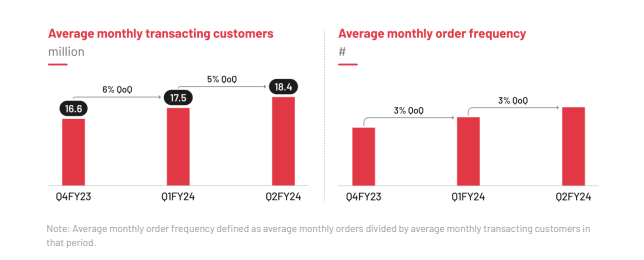
Over the last couple of quarters, order growth was driven by an increase in both MTC and monthly ordering frequency. The increase in monthly ordering frequency was largely a result of the growing adoption of Gold program, as Gold members tend to order more frequently compared to non-members. Going forward, the company thinks that the majority of the growth will come from growth in MTC, as more of low-frequency customers start ordering more frequently. From business point, a 6 crore annual transacting customer (ATC) base translates to only about 1.8 crore monthly transacting customers (MTC) (about 30% of the ATC). As more of ATC base starts transacting every month, the 30% number will keep increasing, resulting in growth in MTC. On top of that, Zomato will also keep adding new customers every month to the ATC base, which will further drive the growth of MTC.
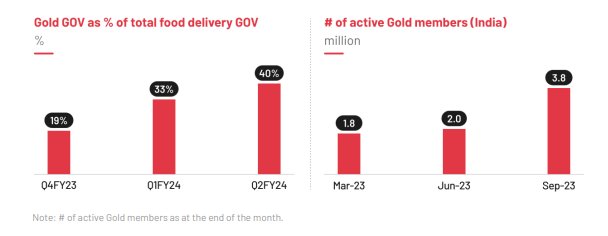
Quick Commerce bounced back with a 29% growth in order volume from the preceding June quarter. Blinkit GOV growth was largely driven by same-store sales growth, with over 60% of Blinkit stores now contribution-positive. However, the company warned of moderation in quarter-on-quarter GOV growth in food delivery in the next quarter to around the high single digit. Zomato customers are also being charged a nominal platform fee (in the range of Rs. 2–5 per order), including those of Zomato Gold members.
The foodtech giant has been piloting various programs in its efforts to increase its revenue and turn profitable. In August last year, it launched intercity food delivery under the Intercity Legends branding. While Intercity Legends was launched in Delhi and later extended to Bengaluru, the startup was looking at expanding the service to other top cities as well.
Zomato's Intercity Legends was launched as a pilot in Delhi in late August to offer 24-hour food delivery from premium restaurant brands in different parts of the country. Zomato Intercity Legends is a new service that allows customers to order culinary specialties from other Indian states, with orders delivered in a day or two. The service is currently available only to residents of South Delhi and Gurgaon. There are 8 cities from which customers can order food using Zomato Intercity Legends, i.e., Kolkata, Hyderabad, Lucknow, Jaipur, Bengaluru, Mathura, Chennai, and Agra.
Zomato share open in green today and is trading at Rs 120.








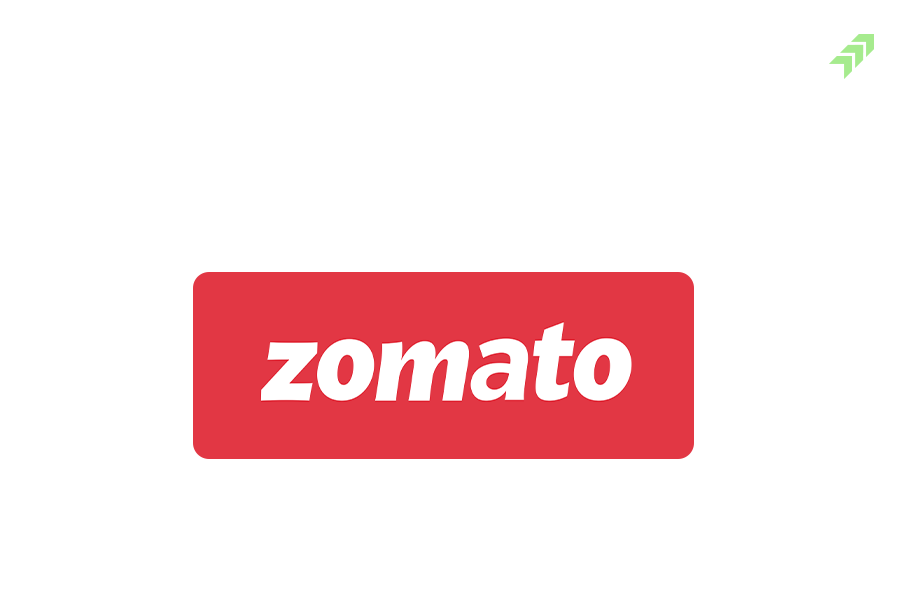

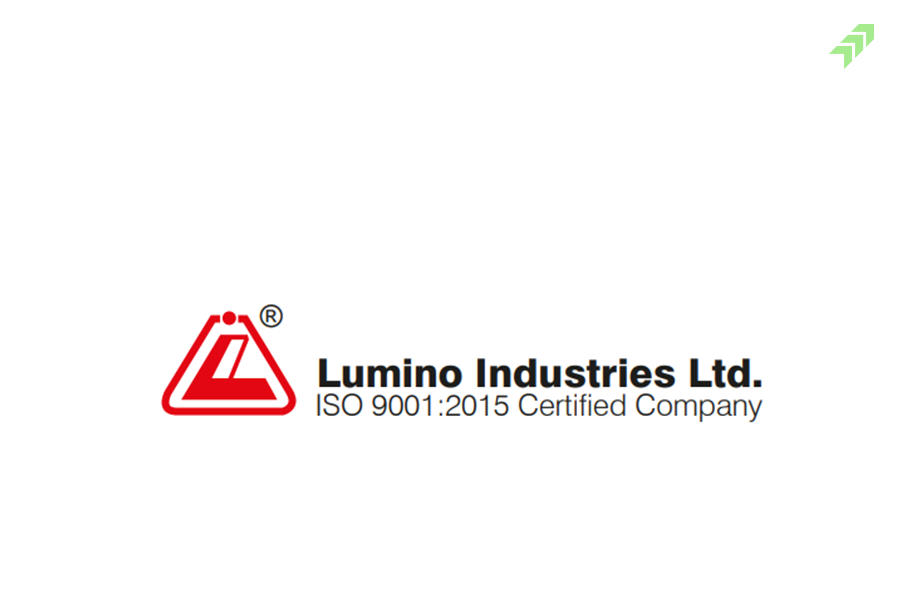
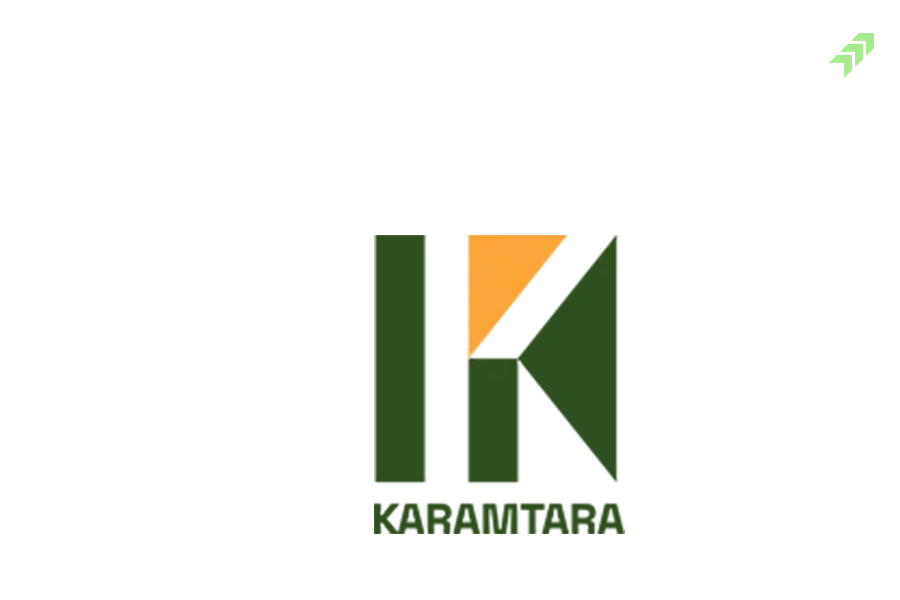
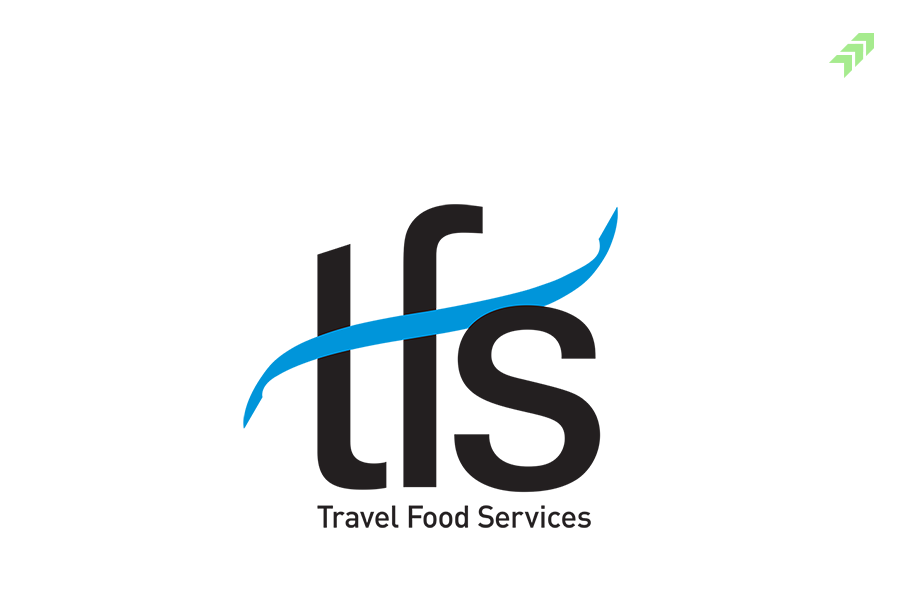





No comment yet, add your voice below!